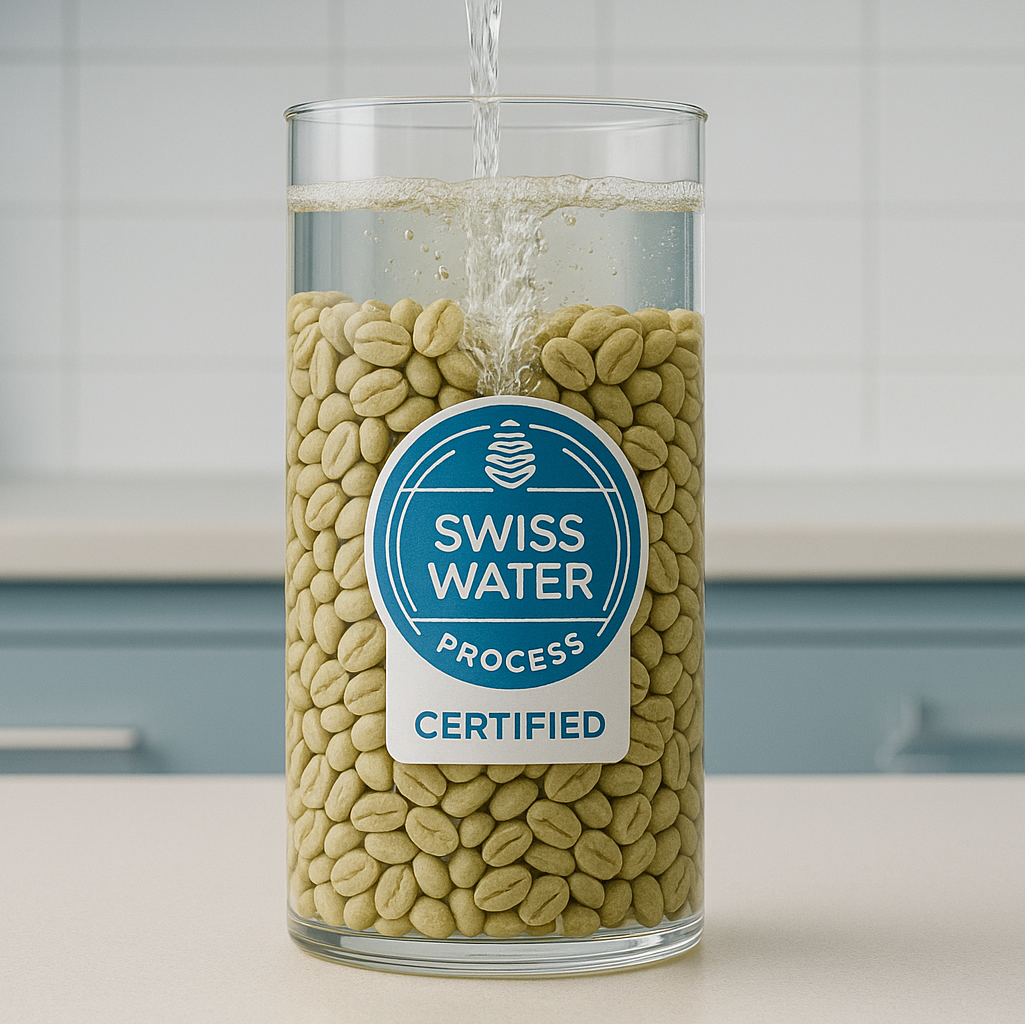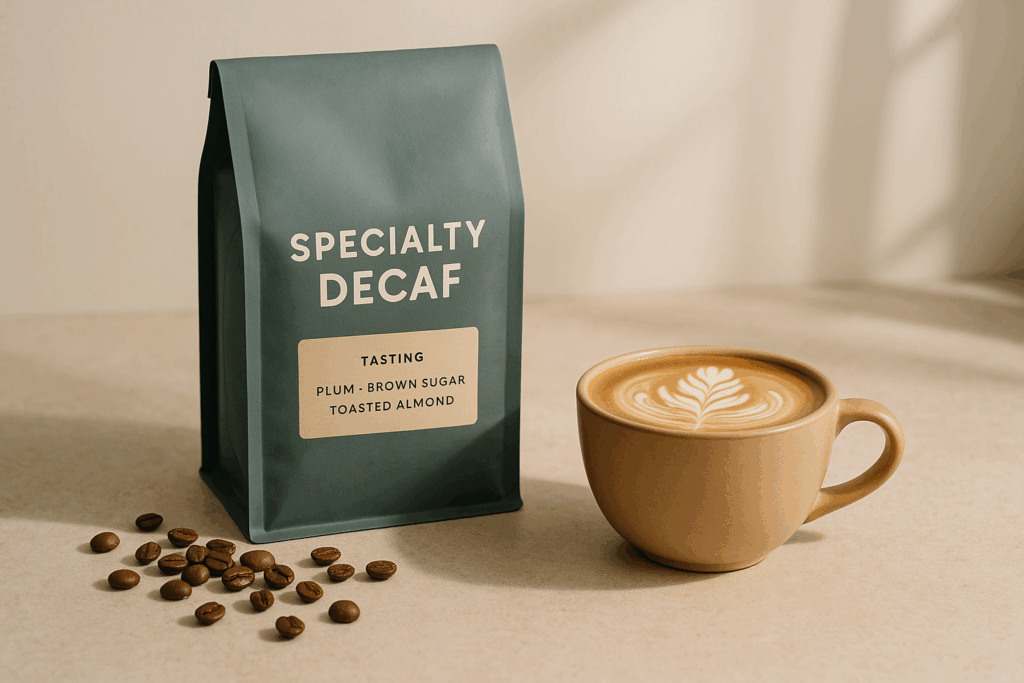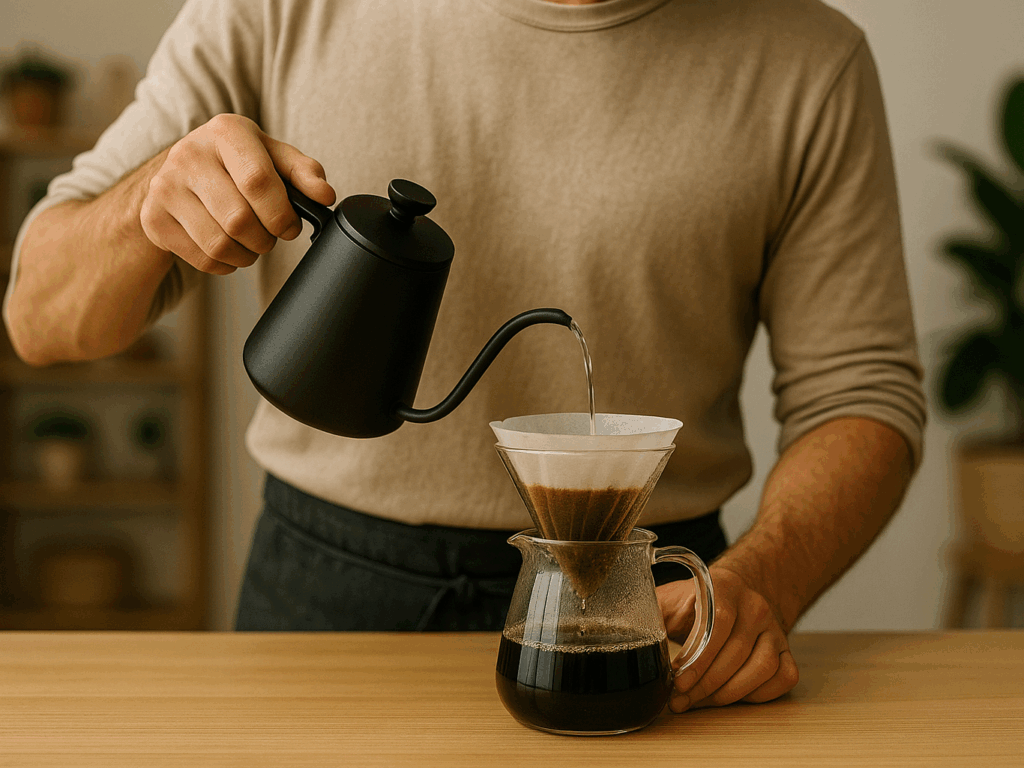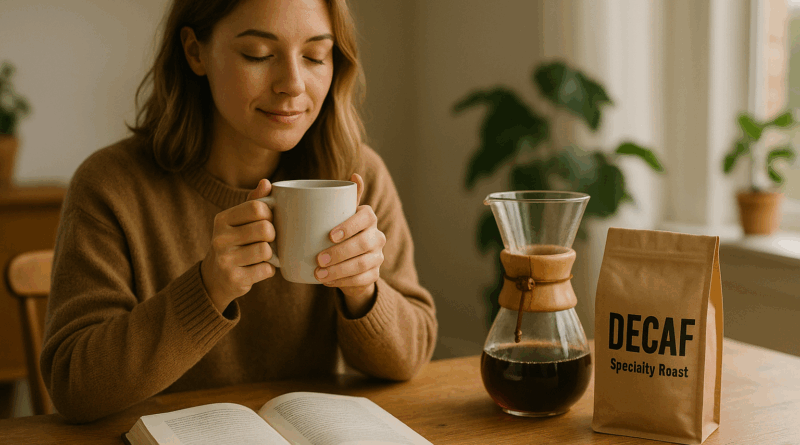Decaf Coffee Explained: How It’s Made and How It Affects Flavor Profiles
What Is Decaf Coffee, Really?
Decaf coffee has long lived in the shadow of its fully caffeinated sibling. Often misunderstood, it’s typically been seen as a compromise—something you drink when you can’t have real coffee. But in reality, decaf is simply coffee that has had most of its caffeine gently removed. Not all of it, though: legally, a coffee can still be labeled “decaf” if it contains up to 3% of its original caffeine content. That means some decaf cups still have a small kick—just a lot less than your usual brew.
It’s also worth busting another myth: decaf is not made with synthetic beans or artificial ingredients. It’s made from the very same Arabica or Robusta beans used in regular coffee. The difference lies in the process, not the bean itself. In fact, the best decaf options today start with high-quality beans and are processed in ways that prioritize both safety and flavor.

And if you’re wondering why so many people are reaching for decaf these days—even when they don’t have to—our guide on decaf coffee benefits explores the health and lifestyle reasons behind its growing popularity.
How Decaffeination Works: Main Methods Explained
Removing caffeine from coffee is a delicate balancing act. The challenge is to take out the stimulant while keeping the flavor compounds intact. Over the years, several decaffeination methods have been developed—some more natural, some more scientific—but all aiming to do the same thing: leave the taste, lose the buzz.
Swiss Water Process
One of the most well-known and widely praised methods, the Swiss Water Process is entirely chemical-free. It uses water, temperature, and time to gently extract caffeine from green (unroasted) coffee beans. The process relies on a “green coffee extract,” which helps pull caffeine out of the beans without removing flavor. It’s considered one of the cleanest and most flavor-preserving techniques available.
This method is especially popular among specialty roasters, and you’ll often see the “Swiss Water” label used as a badge of quality on decaf packaging.

CO₂ (Carbon Dioxide) Method
This method uses highly compressed CO₂ in a liquid-like state to target and extract caffeine molecules from the beans. It’s efficient, especially on a large scale, and also tends to preserve much of the bean’s original flavor profile.
Because it’s a closed-loop system, the CO₂ can be reused, making this method more environmentally sustainable than some older options. It’s commonly used in Europe and in many commercial decaf productions.
Sugarcane / Ethyl Acetate Method
Also known as the natural decaf method, this technique uses ethyl acetate—a compound that can be derived from sugarcane—to remove caffeine. The beans are steamed, then rinsed repeatedly with the solution, which bonds with the caffeine and draws it out.
Though “acetate” might sound synthetic, this method is widely regarded as safe and even eco-friendly when the ethyl acetate is naturally sourced. It tends to leave a slightly sweet note, which can be desirable in certain roast styles.
Methylene Chloride Method
One of the oldest chemical methods, this approach uses methylene chloride to remove caffeine. Despite the intimidating name, it’s approved for use in coffee by health authorities when trace amounts are removed before roasting. This method is still in use, especially in mass-market decafs, but it’s often avoided in specialty circles due to consumer perception—even though it’s considered safe at regulated levels.
How These Methods Affect Flavor
One of the most common questions about decaf is whether it tastes as good as regular coffee. The honest answer? It depends—but the gap is narrowing.
Every decaffeination method interacts slightly differently with the delicate aromatic compounds in coffee. Because flavor molecules and caffeine molecules sometimes bond together or occupy similar spaces in the bean, some loss of flavor complexity is almost inevitable. That’s why lower-grade decafs can taste flat or slightly dull—missing the sparkle or depth of a regular cup.
However, modern techniques like the Swiss Water and CO₂ methods are much better at preserving origin-specific flavor. For example, a decaffeinated Ethiopian coffee processed using the Swiss Water method can still show off its signature fruity, tea-like notes—just with a softer finish. Think of it as listening to your favorite song on vinyl instead of streaming: the music is the same, but the texture is slightly warmer and more subtle.
It also matters when the caffeine is removed. Most decaffeination happens before roasting, which means the roaster has to adapt their approach to suit beans that have already been through an intense hydration and extraction process. It’s a bit like cooking pre-marinated vegetables—they’re still great, but you need to handle them gently.
Specialty Decaf: A New Generation of Flavor
In the past, decaf was mostly treated as an afterthought. Roasters would use leftover or lower-grade beans, decaffeinate them with harsh methods, and sell them as a side option. But that’s no longer the case.
Today, a growing number of specialty coffee roasters are taking decaf seriously. They source high-quality beans—sometimes even micro-lots—and apply gentle decaffeination methods that preserve the character of the coffee. You’ll find single-origin decafs with tasting notes like plum, brown sugar, or toasted almond. And yes, some decaf espresso shots now hold up beautifully in flat whites or cappuccinos.

What to Look For: Decaf That Actually Tastes Great
So, how do you choose a decaf that delivers on flavor?
Start by looking for transparency. Words like Swiss Water, Sugarcane Process, or CO₂ Method on the label are usually good signs. These methods are gentler and often chosen by roasters who care about taste.
Check if the bag mentions a single origin, roast level, or specific tasting notes. That usually means the decaf wasn’t an afterthought—it was crafted to stand on its own.
Finally, don’t be afraid to brew it like you would any great coffee. Decaf shines in pour-overs, moka pots, and even espresso. And while its flavor might be a touch more mellow, that’s often exactly what makes it perfect for evening rituals or caffeine-conscious moments.
The Takeaway: Process Matters, but So Does Intention
In the end, how decaf coffee is made plays a huge role in how it tastes—but so does how seriously it’s treated. Thanks to better methods and more care in sourcing, decaf is no longer “almost coffee.” It’s real coffee, crafted for real flavor, just without the buzz.
And as more people choose coffee for ritual, comfort, and wellness—not just stimulation—decaf is finally stepping into the spotlight it deserves.


